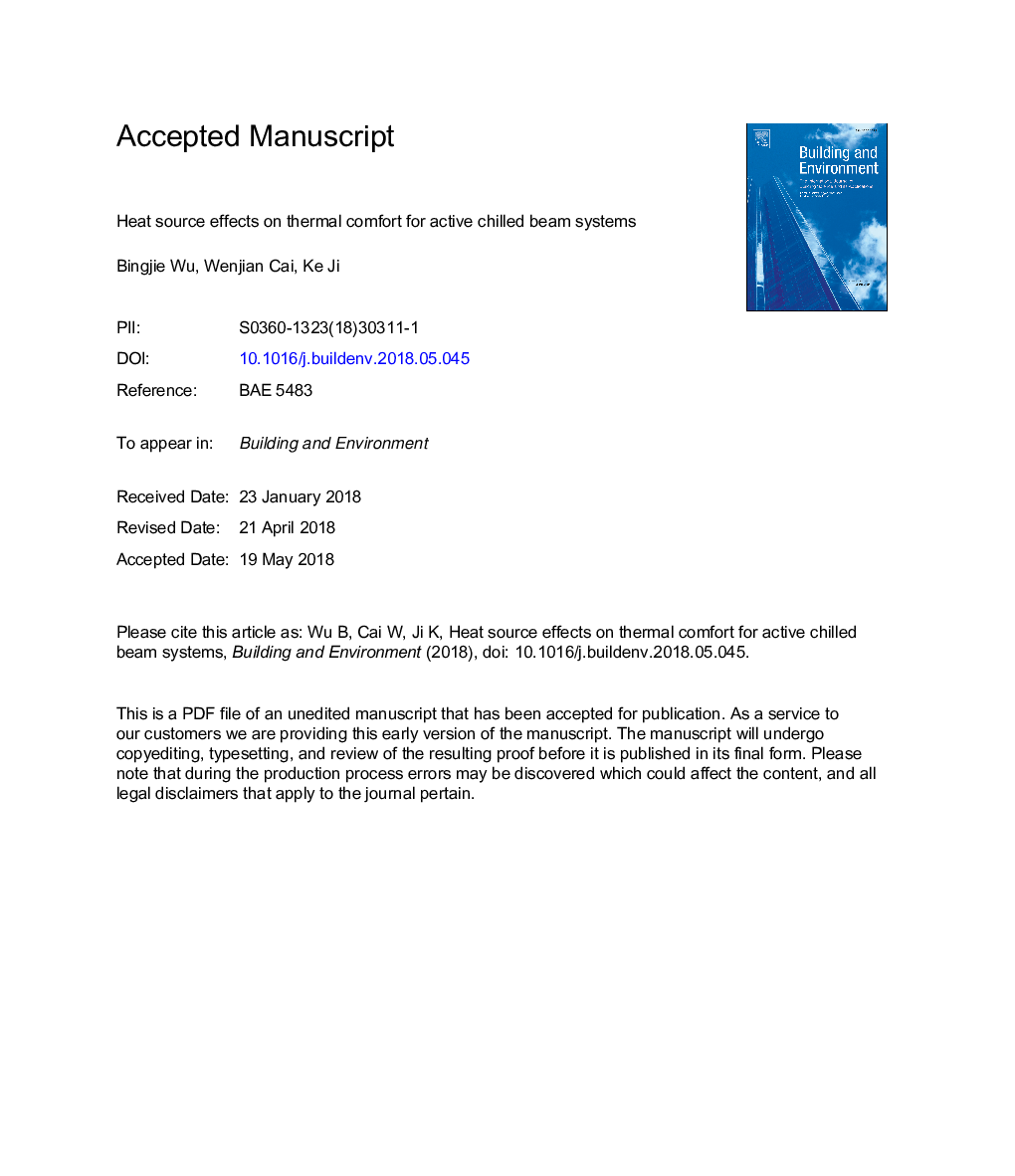| Article ID | Journal | Published Year | Pages | File Type |
|---|---|---|---|---|
| 6696920 | Building and Environment | 2018 | 31 Pages |
Abstract
In this study, the effects of the configuration and strength of heat sources on thermal comfort are investigated in a mock-up room with an active chilled beam (ACB) system. Full-scale air temperature, speed, and humidity distributions are demonstrated. In addition, the uniformity of the distributions is evaluated. Several common thermal comfort indices, including the air diffusion performance index (ADPI), predicted mean vote (PMV), draft rate (DR), and vertical air temperature difference (VATD) are calculated and compared based on the experimental results. The results reveal that the heat sources increase the average air speed of the occupied zone. However, the air speed distribution is not significantly affected by the heat source configuration for a primary airflow rate of 32.2â¯L/s. In contrast, the heat source configuration has a notable impact on the temperature distribution. One humidity sensor is sufficient to measure the occupied zone humidity for ACB systems with no significant humidity source because the absolute humidity distributions are extremely uniform for all cases. The points outside the ADPI criteria (â1.7°C
Related Topics
Physical Sciences and Engineering
Energy
Renewable Energy, Sustainability and the Environment
Authors
Bingjie Wu, Wenjian Cai, Ke Ji,
